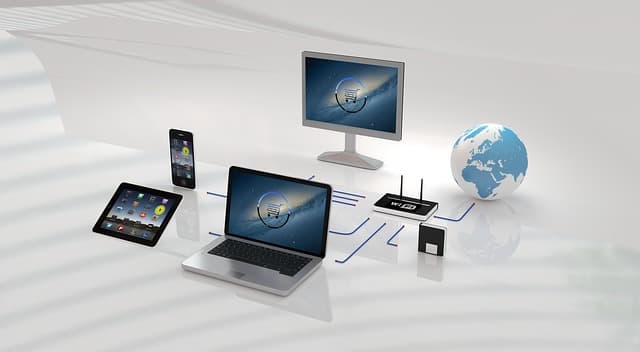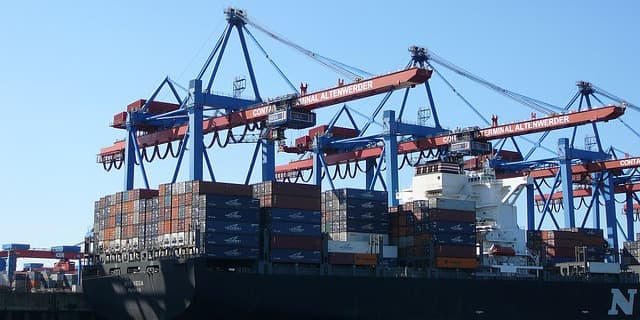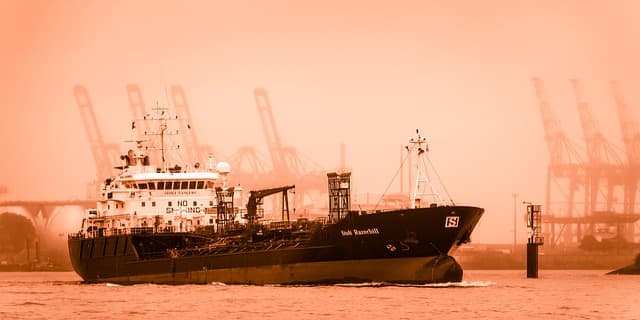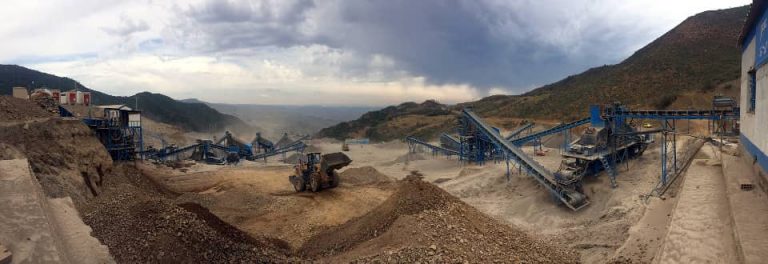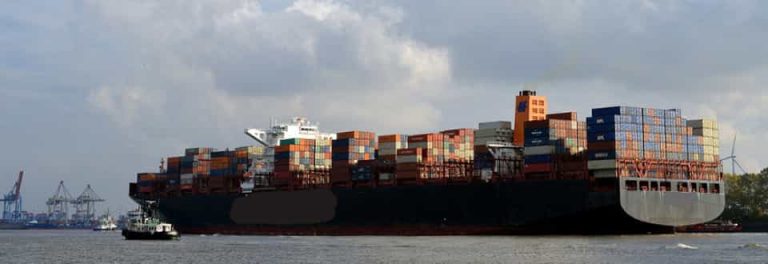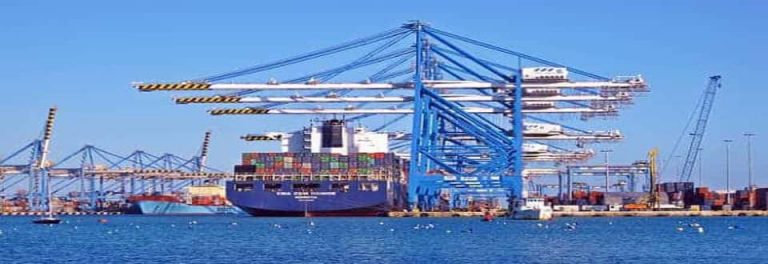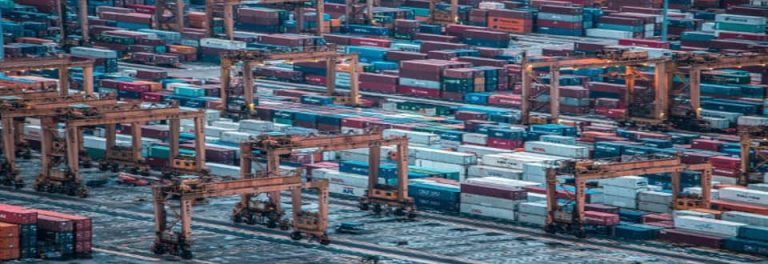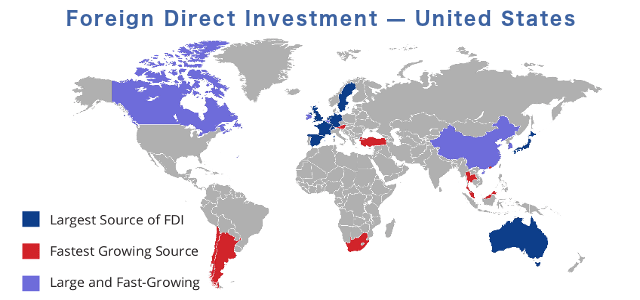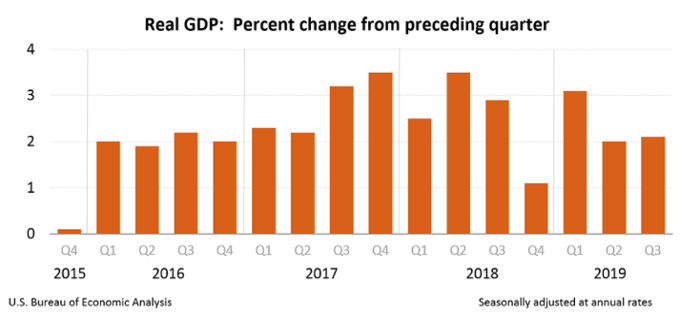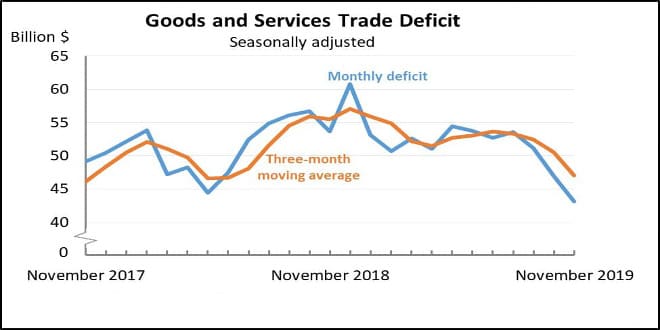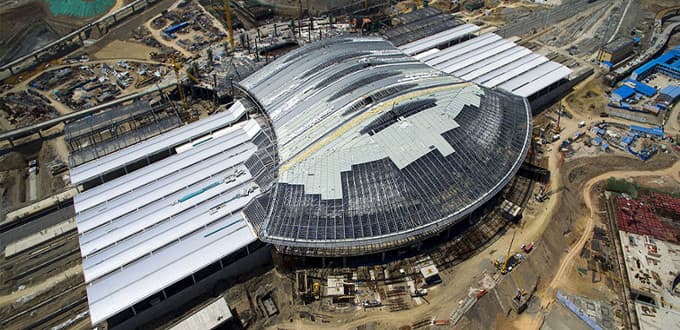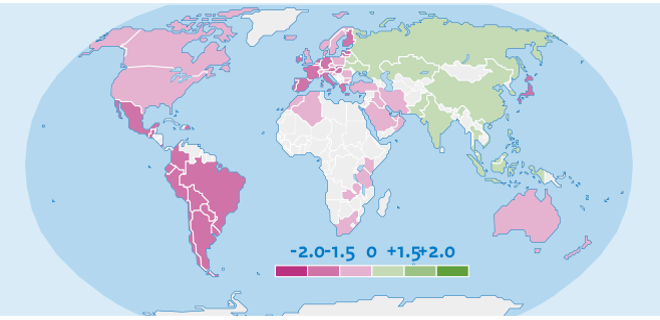An Interconnected & Interlinked World
of Business, Trade, and Commerce.
of Business, Trade, and Commerce.
The Belt and Road Initiative & Made in China 2025
The Great Convergence
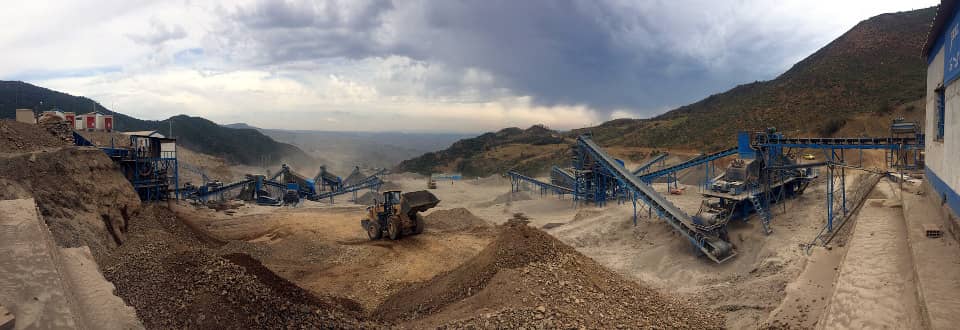
Riding high on the fast tracks of the Belt and Road Initiative (BRI), Made in China 2025 (MIC 2025) is rapidly making inroads into the countries around the Belt & Road—from the Asia-Pacific into Africa and Europe to South America.
The speedy adoption of the duo by a significantly large number of economies across the world—despite strong opposition and resistance from some certain quarters, is a testament of the success of China’s ‘win-win’ strategy that has brought in the synergistic collaboration and cooperation of the collective for the benefit of all the parties connected via the BRI.
With a purely investment and business perspective the Belt & Road Initiative – along with the ‘MIC 2025’, is probably the greatest opportunity of the century. The duo has managed to open up large swathes of global economies for broad-minded businesses and investors around the world to participate and invest into.
The BRI is paving the way for many countries which for centuries have been in desperate need to build and upgrade their transportation systems and infrastructure connectivity in order to vitalize their economies and uplift the standard of living for the masses.
Utilizing its massive resources, enormous capacity, expertise – and the state supported financing, Chinese construction and manufacturing industry has gone into hyper drive building roads, railways, bridges, tunnels, ports, airports, communication systems, power generation stations, hospitals, schools, and other essential structures and facilities in the countries on and around the BIR countries—spurring economic growth for those economies, and opening new markets and opportunities for the Chinese businesses.
As of the end of 2019, 138 countries are part of the project, according to China.They include New Zealand, Russia, Italy, and even Syria.
China is undertaking what it considers the largest project of the century — linking itself with more than 100 countries across Asia, Africa, Europe, and Oceania through trade.
The Belt and Road Initiative is a massive trade and infrastructure project that aims to link China to dozens of economies across Asia, Europe, Africa, and Oceania.
The main focuses of the Belt and Road Initiative (BRI) — also known as “One Belt, One Road” — are in infrastructure, transportation, and energy.
Most BRI deals involve China lending vast amounts of money to other countries to build new railroads, shipping lanes, and other ventures in those countries. Investment from China alone in the project is estimated to be between $1 trillion and $8 trillion.
While the BRI is also becoming instrumental in opening the channels for the ’internationalization’ of Chinese currency—the renminbi (RMB) – which in English translates to the “people’s currency” [ Renminbi is also known by its counting unit; the Yuan (CNY) ], connecting and integrating the BRI economies to Chinese economy and financial system, the innovative high-tech giants like Huawei are spreading their reach to interconnect the BRI participant economies and, in the process, globalize their brands and protocols—like the 5G standards.
It certainly is a ‘win-win’ strategy— with both a public-wellness perspective and business perspective.
The Inception of The Belt & Road Initiative
During its past heydays China enjoyed tremendous prosperity thanks to trade with Eurasia. Large caravans of camels loaded with goods were continuously traversing the old Silk Roadin both directions.
People in China always had the fond memories of the Silk Road and the longing for the prosperity associated with the trade.
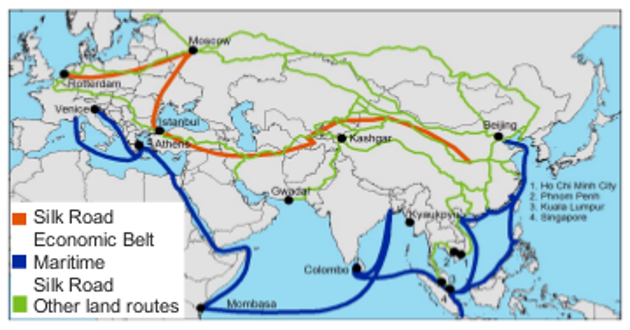
With its infrastructure, manufacturing, and logistics on solid footings, China was again ready to re-emerge as the top trading partner of almost every nation in the world.
It was in on September 7, 2013 in Astana, Kazakhstan that President Xi Jingping first presented his vision to the world for remapping the ‘New Silk Road’:
“To forge closer economic ties, deepen cooperation and expand development in the Euro-Asia region, we should take an innovative approach and jointly build an ’economic belt’ along the Silk Road. This will be a great undertaking benefiting the people of all countries along the route… We must expand the development of Eurasia, creating an economic belt along the Silk Road. China and the Central Asian countries are at a crucial stage; we need a broader vision for cooperation. The peoples of this ancient Silk Road together can compose a wonderful new chapter in the much-told story. Now is a golden opportunity for development.”
The old Silk Road was connecting China with the Eurasian economies. China’s new vision included the countries farther away – across the ocean, especially the Asia Pacific region—China’s own backyard, as well. To fulfill that vision, the concept of Maritime Silk Road was introduced by President Xi Jingping at the Indonesian Parliament on October 3, 2013:
“Southeast Asia has since ancient times has been an important hub along the ancient Maritime Silk Road. China will strengthen maritime cooperation with ASEAN countries to vigorously develop maritime partnership in a joint effort to build the Maritime Silk Road of the 21st Century. China is ready to expand its practical cooperation with ASEAN countries across the board, supplying each other’s needs and complementing each other’s strengths.”
The Belt and Road Initiative as proposed by President Xi Jingping was aimed at building a trade and infrastructure network: connecting Asia with Europe and Africa along the ancient trade routes of the Silk Road to seek common development and mutual prosperity.
It was the vision that was shared and applauded by most of China’s far and near neighbors. It ignited the hope for better prospects in the region.
The Objectives of The Belt & Road Initiative
The official Belt and Road Initiative blueprint that was issued in March 2015 emphasized five broad areas of cooperation:
- 1. Coordinating economic development strategies and policies.
- 2. Infrastructure connectivity.
- 3. Lowering trade barriers and improving investment and trade relations.
- 4. Deepening financial cooperation.
- 5. Strengthening people-to-people links.

From its very inception China’s Belt and Road Initiative (BRI) was committed to building connectivity and co-operation across the participant countries. To start with, a special focus was put on the six main economic corridors encompassing:
- China-Mongolia-Russia region
- Eurasian countries
- Central and West Asia
- Pakistan – China Pakistan Economic Corridor (CPEC)
- Other Indian sub-continent Countries, and
- Indochina.
These are the regions closest—and also of significant importance, to China. Most of the countries in that region had a large infrastructure gap constraining their economies, trade, and future prosperity of their people.
Mutual benefit is defined as a built-in feature of the BRI which has also been helping to develop markets for China’s products, technologies, and services and to alleviate excess manufacturing capacity of the Chinese industry.
Emphasis on Energy—Clean Energy
Energy projects have been a major part of China’s Belt and Road Initiative infrastructure mega-plan for Eurasian countries along the BRI. Energy investments in BRI countries are projected to add up to US $27 trillion by 2050, with US $7 trillion alone going to power grid construction. These projects alone are expected to create over 200 million new jobs in the BRI economies.
Many think-tanks on the western-side of the political spectrum believe that China is working to dominate the global energy sector by facilitating massive continental and even global power grid integration. That may be open to debate, but the Chines plans and projects are certainly of gigantic proportions.
The Belt and Road Initiative prioritizes building the infrastructure, energy generation, and communication network as these structure form the foundation for the rejuvenation of economy. Outlining the top priorities for the Belt and Road Initiative in March 2015, China placed a lot of emphasis on co-operation on energy-infrastructure.
As of the end of 2019, about two thirds of Chinese spending on completed BRI projects has gone into the energy sector. Spending on energy already amounts to more than US $60 billion. The rest of the expenditure—more than US $25 billion, has been for transport projects and the digital silk road—which amounts to more than US $15 billion.
The Coupling of MIC 2025 and BRI
Thanks to the policies, support, and coordination of the Chinese government, Chinese high-tech industry has leapfrogged ahead of its global competitors in many areas, and is raising the alarms in many circles.
China, fully committed and dedicated to its declared objectives as out lined in its ‘Made In China 2025’ manifesto, is investing hundreds of billions of dollars in making MIC25 a success. As of the end of 2019, there were more than 2,000 governmental investments and funds providing the MIC 2025 related industry an aggregate of about 3.5 Trillion Yuan.
Beside the direct financing and funding, the central government also coordinates the flow of information and research work-sharing among the related sectors of the industry, build the infrastructures, industrial parks and demonstration zones. Such a well coordinated policy and a centralized push and support is invigorating the sprit of innovation among the researchers and entrepreneurs alike.
Bypassing and jumping over the existing technologies, China has jumped ahead into the ‘next-generation technologies’. It is now leading the world in cutting-edge technologies and their applications like Information Technologies—5G – dominated by the innovators like Huawei and ZTE, Artificial Intelligence (AI), Facial Recognition, Big Data, New Energy, New Materials, Quantum Computing, Ultra-High Voltage Electricity Transmissions, High-Speed Railways, Electric Vehicle (EV) / Alternative Energy Vehicles, Digitalization of Economy—Digital Payment and Communication Systems, and Smart Manufacturing, etc.
The Concerns of Chinese Dominance
That is a further cause of concerns and alarm in Western industrialized countries’ ‘think-tanks’ that see China as a threat, rather than an opportunity.
The Berlin-based Think Tank and leading European provider of policy-oriented research on China The Mercator Institute for China Studies (MERICS) stated in its research paper, “In Western industrialized countries, China’s ambition has caused considerable irritation.”
China’s high-tech rise is not a threat to the EU per se: if innovation were based on reciprocal and transparent cooperation, transcending protectionist logic, all sides could benefit from new ideas and developments. But if China pursues a path of self-reliance this will pose fundamental challenges to co-operation and mutual confidence. The EU’s current lack of a truly European innovation eco-system and its politically inconsistent responses to China suggest it will struggle to cope.
China’s innovation offensive will affect the competitiveness of other nations in many high-tech sectors. Its dynamics are already affecting Europe’s innovation environment and industrial foundations on several levels:
- China’s pulling ahead in emerging technologies will change the market environment for European companies. This is already visible in areas such as AI, electric vehicles (EVs) and the EV battery industry.
- The ability to offer more competitive prices for technology that might not be top-notch but that is good enough will put pressure on European companies in a broader set of industries, also in third markets.
- Companies have started to divert R&D to China, especially in emerging industries. Europe will feel the heat of this shift: Carmakers like BMW, VW and PSA have already opened up facilities for electric vehicle R&D in China.
- Fierce competition from Chinese companies might erode the profitability of European companies and limit their ability to fund R&D. This could slow innovation in Europe, allowing Chinese companies to close existing technological gaps at an even greater pace.
But, despite all the sanctions, restrictions, denying of access to essential chips and software, and the trade wars China’s Belt and Road Initiative and the Made In China 2025 are moving forward steadily. It seems that the world at large is adopting the Chinese Belt and Road Initiative and its technologies—5G-Huawei to DJI, quite eagerly.
China & BRI—A Great Opportunity
Evolving from its incubation stage, the Belt and Road Initiative has emerged a new reality of interconnected global trade and business. Trade and business is growing along the BRI at quite a fast pace as more and more countries, economic regions, and institutions are joining the BRI.
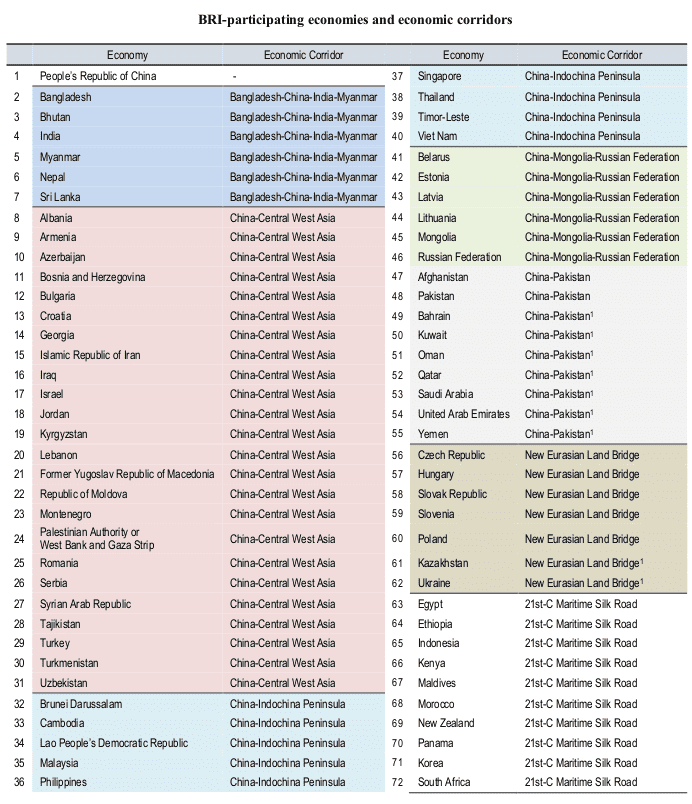
It is an unprecedented opportunity for business and investment to move in and reap the rewards.
The participating Belt and Road economies have been rising and their share of the world economy is growing significantly. The following data—as of the end of 2019, on trade along the Belt and Road economies help present the picture well:
- China has concluded more than 200 intergovernmental cooperation agreements with 138 countries and 40 international organizations.
- The goods trade volume between China and countries and regions along the Belt and Road Initiatives has surpassed 6.8 trillion U.S. dollars from 2013 to 2019, according to the National Development and Reform Commission (NDRC).
- China’s Foreign Direct Investment in countries along the BRI has reached more than 100 Billion U.S. dollars.
- For the year 2019, China’s trade with B&R countries totaled about One Trillion U.S. dollars, and its non-financial direct investment in these countries topped 18 billion U.S. dollars.
- To provide for bilateral trade between the BRI participant economies and boost financial connectivity, China has signed currency swap agreements with 30 countries and formed RMB clearing arrangements with ten countries.
The Cross-border Interbank Payment System (CIPS) has covered more than 60 Belt and Road countries and regions. - The construction of the China-Laos railway, China-Thailand railway, Jakarta-Bandung High-Speed Railway and Hungary-Serbia railway are making solid headway while projects including the Gwadar Port, Hambantota Port, Piraeus Port and Khalifa Port are moving smoothly towards completion.
- China-Russia Crude Oil Pipeline, China-Central Asia Gas Pipeline, and China-Myanmar Oil & Gas Pipeline have been completed and are operational.
- The Eurasian (China-Europe) freight train service network—a crucial part of the Belt and Road Initiative that connects China with 56 cities in 16 European countries, has expanded rapidly, reaching 20,000 trips by the end of 2019, according to Landbrigde Logistics and National Bureau of Statistics of China. 99% of dispatched trains return with a comprehensive load rate of 88%.
- The building of the China-Belarus industrial park, China-UAE Industrial Capacity Cooperation Demonstration Zone and China-Egypt Suez Economic and Trade Cooperation Zone is also forging ahead with the objective of marketization and legalization mechanism to create tax sources and employment channels for these countries.
- On the China-Pakistan Economic Corridor—A showcase of the Belt and Road Initiative with nearly 20 Billion U.S. dollar investment already made, 19 main projects have been completed, or are near completion.
Eight of the ten biggest power projects under Belt and Road Initiative are in Pakistan. Seven of these energy projects have gone into operation with a total installed capacity of 3.4 million kilowatts, which can meet the power need of 8.6 million households.
3 transportation projects were launched: Phase 2 of upgrading and renovation of Karakoram Highway, Karachi-Peshawar Motorway, and Lahore’s Orange Line are moving closer to completion.
A compelling Business & Investment Opportunity
China, with its Belt and Road Initiative and MIC 2025 program, has opened up a completely new era for business across the world. As the purchasing power – and the appetite for foreign goods and services, of the Chinese consumers is growing rapidly, China is further opening up its markets to the world.
From the banking and financial services to the consumer goods, it is a huge market and tremendous opportunity to avail.
The second China International Import Expo in Shanghai in November 2019 was a testament to the positive business environment in China. With the participation of 172 countries, regions, organizations, and 3,617 enterprises more than US $72 deals were signed during the Expo itself.
It is tremendous market—the largest in the world in Real-terms, and a great opportunity to miss out.
元 $ € ¥ ₿
Information
Reports & Analysis
To Help Evaluate
The Potentials For
Business
&
Investment
In an Interconnected
World
-
The Belt and Road Initiative & Made in China 2025
Riding high on the fast tracks of the Belt and Road Initiative, Made in China 2025 is rapidly making inroads into the countries... Fierce competition from Chinese companies...
-
MIC 2025 || The Changing Landscape of Chinese Economy
It was in 2015 that China unveiled its Made in China 2025 (MIC 2015) project. Since then, Chinese economy is metamorphosing and changing at a breakneck pace...
-
Top Freight Forwarders by Country
Large scale ‘local area’ Freight Forwarders listed here, through their contacts and arrangements, also provide services on a global scale. Their main strength though lies in...
-
Most of the Top Global Freight Forwarders listed here serve all the major ports across the Globe, and, through relationships with their business partners, also provide a full suite of...
-
Glossary: Shipping, Freight, & Supply Chain Logistics
Like any other professional field, the shipping/freight industry has its own unique set of terminology—A rather extensive and complex one. Here we have compiled the Glossary of the most useful...
-
Global Foreign Direct Investment—Inward Flow
A comprehensive and historical Global FDI Inward-Flow Data spanning the period of 2000—2018. The data is compiled by grouping and associating a variety of economies together; by the state of...
-
The new phase of economy in China is an opportunity for the businesses. The emphasis is now on raising the living standards of masses, implementing supply-side reforms, and opening up...
-
Top 50 Container Ports in The World
Large Capacity & Super Busy Container Ports in a country are the pointers of country’s economic potentials...Bulk of the world trade in goods—more than 90% of it...
-
Supply Chain | Definition and Objectives
Supply Chain can be viewed as a network connecting a business to its suppliers and distributers to facilitate the production, processing, and distribution of its products to the consumers. It incorporates...
-
Global Business | Supply Chain & Logistics
With the technology—and global eCommerce platforms like Ali Baba, JD.com, Tancent, Kaola, Lazada, WooCommerce, VTEX, and Shopify etc, it is easier to sell products and services Globally.
-
Shipping Logistics | The Role of Service Providers
The logistics of getting the goods delivered to faraway destinations—especially to foreign markets, is a complex business. It requires the services of outside entities to...
-
Freight Forwarders | Role in Global Commerce
Freight Forwarders specialize in taking care of the entire process for their shippers | from warehousing to the shipping of their merchandise. They act as an agent and intermediary...
-
Real GDP | Nominal GDP vs GDP PPP
In evaluating and analyzing global investment opportunities and, also in the business decision making process, we need to know the actual comparative state of the economies of various countries and...
-
With the perspective of charting course for the expansion of business or investment, an analytical review of the ‘real value’ of a nation’s/region’s GDP is essential. To this end, an understanding of the methodologies used in...
-
New Global Business Order—The Global Information Stage
Whatever the business be, it has to be ready to play on the Global Stage. It is the global arena. The Supply-and-Demand chain is global. ..There is no business that can be considered as purely a...
-
Global Real GDP Growth Rate—And Forecast
Real GDP provides an inflation-adjusted measure that reflects the true value of all goods and services produced by an economy in term of real value of...
-
Foreign Direct Investment Inward Flow in The US—A Global Perspective
The Inflow of FDI in the U.S. was up by US $50 Billion in the 3rd quarter of 2019. FDI plays an essential role in the economic growth, creating jobs, and driving exports...The tables present...
-
US Gross Domestic Product: 2019—By Quarters
Real US GDP increased at an annualized rate of 2.1 percent in the 3rd quarter of 2019—that was up from the second quarter. Real gross domestic income (GDI)...
-
Foreign Direct Investment—Impact and Analysis
Foreign Direct Investment (FDI) plays an important role in the development and growth of any country’s economy - especially the developing countries. But, in actual practice...
-
Foreign Direct Investment and Business in China
China is establishing itself as the Model Destination for FDI inflow and a hub for corporate relocation and R&D...
-
US Global Trade & Top Trading Partners | Year-to-Date
Since hitting the peak in November 2018, U.S. global trade deficit in goods and services has been on the decline. But, the declining trends in both Imports and exports...
-
The Growth of Mobile Payments and Virtual Banking—A Global Perspective
Mobile Payments, Virtual Banking, and other modes of mobile transactions - both at consumer and commercial level, are growing globally at an ultra fast pace — more so in China and Asia Pacific and...
-
Belt and Road Initiative—Objectives & Achievements
As of the end 2019, the BRI — a project to interlink the global economies with China, includes 140 countries—encompasing more than 2/3 of the world’s population. The trade on BRI is...
-
In 2019 US imports from China dropped more than 12.5 percent to US$456 billion (Source: United States’ Census Bureau ) while China’s imports from the US dropped to US$122.7 billion...
-
Humans by nature - or by need, are traders. We trade our work, services, produce, or products for money. Then, we exchange that money for the goods and services that we need. Any excess/leftover money is either directly invested or deposited in the banks—thus, making the money to recirculate in the economy again.
Information, Data, and Reports organized alphabetically By Topic:
Global Business
Investment
Trade & Commerce
Always The Key to
to Wealth & Prosperity
Since before the days of
Camel Caravans & Sailboats


